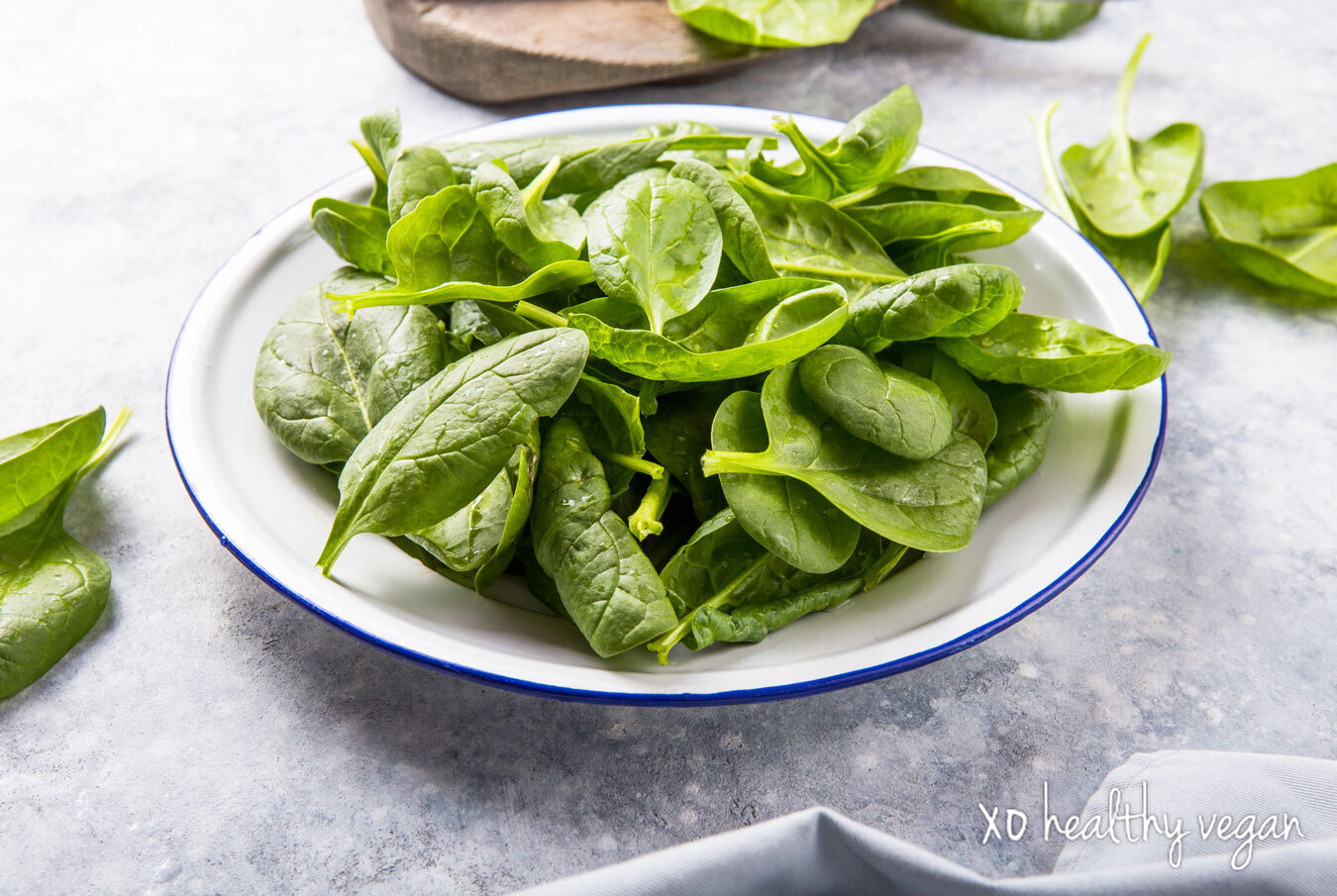One of the greatest joys of my three-decades-long vegan journey has been exploring the vast and delicious world of vegetables. The sheer variety of edible plants never ceases to amaze me, and it seems that every time I travel to a new country, I’m introduced to even more marvels from the plant kingdom that I never knew even existed. Garlic scapes? Culantro? Where have you been all my life?!
Besides taste and texture, vegetables have one major thing going for them: their nutritional value. It just so happens that vegetables contain all the nutrients—including protein—that we need to stay healthy throughout our lives. The key is to eat a wide variety (kale isn’t the be all and end all!) to meet all of our nutritional needs.
While I eat primarily for sustenance, I also take into consideration my daily nutritional needs and plan my meals accordingly. Cauliflower, for example, is loaded with Vitamin C, while spinach is high in beta carotene. Combine the two on one plate, and you’ve got the defenses you need to bolster your immune system and ward off seasonal colds.
Sitting down to a meal built around fresh vegetables makes me feel amazing, and there’s nothing better than relishing a meal that is at once satisfying, delicious, and health-promoting. While all vegetables contain protein and fiber, not all are created equal when it comes to vitamins, minerals, and micronutrients. To get the most bang for your buck, reach for these nutrient-dense vegetables that are game-changers for our health.
The top 20 vegetables for health & wellness
- Spinach
Nutrient profile: Vitamin K, vitamin A, manganese
Spinach is so diverse, delicious, and nutritious! I reap its healthful benefits in everything from a.m. smoothies to baked goods to soups and salads. A squeeze of lemon helps make the iron more bioavailable, and I think it improves its flavor, too. - Kale
Nutrient profile: Vitamin K, vitamin A, vitamin C
This is my go-to vegetable. I always have it in my fridge! Whether massaging into a salad, sautéing, or crisping in the oven for homemade kale chips, there’s no shortage of ways to eat this versatile leafy member of the cabbage family. - Watercress
Nutrient profile: Vitamin C, calcium, manganese
In France, watercress—known as “mache”—is eaten just as regularly as iceberg lettuce is in the United States. I’ve grown to appreciate this delicate green, too, tossing it into salads or transforming it into light summer soups. - Bok Choy
Nutrient profile: Vitamin K, vitamin C, vitamin A
Once upon a time, bok choy was considered an exotic vegetable. These days, it’s as common as broccoli at most supermarkets. I love adding it to flavorful soups and Asian-inspired stir-fries. It’s also crunchy and delicious when sliced thinly and eaten raw. - Chard
Nutrient profile: Magnesium, vitamin K, vitamin A
Chard is as beautiful to look at as it is to devour. I love its shiny leaves and colorful stalks, and appreciate its understated flavor and toothsome texture. Blend it into smoothies, steam and serve with rice, or do like I do and eat it sautéed with garlic and a dash of balsamic vinegar. - Beet greens
Nutrient profile: Calcium, magnesium, lutein
I still cringe when I think about the days when I used to buy a bundle of beets and toss the greens, not realizing they were the most healthful part of the plant! They taste marvelous braised with garlic and onion, or roughly chopped and tossed into soups. - Radicchio
Nutrient profile: Vitamin K, vitamin C, vitamin D
Also called “chicory,” this Italian leafy vegetable has soft leaves and a mildly bitter flavor that’s tempered with cooking. Pair it with apples or pears in a salad to tame the bitterness, or try it chopped confetti style and sprinkled over pizza before popping into the oven. - Red leaf lettuce
Nutrient profile: Iron, vitamin A, vitamin B6
This salad staple has an unassuming but fresh flavor, which makes it an ideal staple for seasonal salads. It adds a level of refinement to tacos, tostadas, sandwiches, and burgers, lending just the right amount of crunch and color. - Parsley
Nutrient profile: Vitamin C, folate, vitamin A
Many people think of parsley as simply a garnish, but it’s actually a wonderful green that can be used in so many different ways. I opt for flat Italian parsley for its versatility, and add it to chopped salads, dips and sauces, and hearty minestrone soups. - Romaine
Nutrient profile: Potassium, calcium, magnesium
What would vegan Caesar salads be without Romaine lettuce? All it needs is to be drizzled with a tangy dressing and topped with homemade croutons. So good! It’s also a surprisingly tasty addition to the barbecue grill. Give it a try and see if you agree! - Collard Greens
Nutrient profile: Manganese, vitamin C, vitamin A
I use collards just like I would a flour tortilla: rolled around a stuffing of beans, grains, and veggies for a raw “burrito” or savory lunch wrap. They’re equally scrumptious stuffed with rice and shiitake mushrooms, smothered in tomato sauce, and baked to comfort-food perfection. - Turnip greens
Nutrient profile: Vitamin A, vitamin K, vitamin C
Turnip greens have a wonderful peppery flavor and taste amazing simply braised or sautéed. Their leaves can be a bit fibrous so they lend themselves to cooked dishes, but limit cooking time to two minutes to preserve their health-supporting chlorophyll and antioxidants - Mustard greens
Nutrient profile: Vitamin A, vitamin K, calcium
Pungent and a little bit spicy, mustard greens are a Southern cuisine staple that I’ve grown to enjoy for their unique flavor. Sautéeing them with garlic and red pepper flakes is all it takes to transform the humble greens into a dazzling side dish. - Endive
Nutrient profile: Vitamin A, folate, niacin
A member of the chicory family, endive has a mildly bitter flavor and delicate texture that lends itself to a variety of preparations. I like to transform the boat-shaped leaves into a classic hors’ d'oeuvre by topping with a dollop of hummus or stuffed with a simple apple-walnut salad. - Arugula
Nutrient profile: Calcium, potassium, vitamin A
This is one of my all-time favorite greens. Its flavor is so unique—piquant and complex—and marries well with Italian foods, from salads to pizza to pasta. The bigger the leaves get, the more chewy they become, so opt for the small, tender variety. - Broccoli
Nutrient profile: Vitamin C, potassium, phosphorous
If there is any vegetable that can be described as a classic, broccoli has got to be it. A mainstay in baked casseroles and salads of yore, the humble cruciferous vegetable is still a favorite among many, including myself! I love it wok-steamed with chili, ginger, and garlic. - Brussels sprouts
Nutrient profile: Vitamin A, vitamin C, calcium
If you’ve had Brussels sprouts and didn’t like them at first try, it’s probably because they were boiled, steamed, or otherwise overcooked. They taste best roasted in the oven until crisp-tender, and still bright green in color. I can’t imagine Thanksgiving dinner without them! - Kohlrabi
Nutrient profile: Vitamin C, vitamin B6, potassium
Both the leaves and bulb of this cruciferous plant are edible, and can be eaten raw or cooked. The flavor is not unlike the flavor of cooked broccoli stems, and I treat the bulb as I would a potato, enjoying it puréed, sautéed, steamed, and baked. - Cauliflower
Nutrient profile: Vitamin C, folate, vitamin B6
Cauliflower has undergone a renaissance of sorts over the last few years. Whether being prepared as “steaks” or “buffalo wings” or even “rice,” one thing is certain: this cruciferous vegetable is the perfect neutral base for every variety of seasonings and spices. - Cabbage
Nutrient profile: Vitamin B6, vitamin C, vitamin K
Whether shredded into a salad, transformed into sauerkraut, or napped with mayo to become coleslaw, cabbage offers crunch and versatility to every preparation. In cold-weather months, I like to stuff the leaves and bake them in a tomatoey sauce for a savory, satisfying meal.

